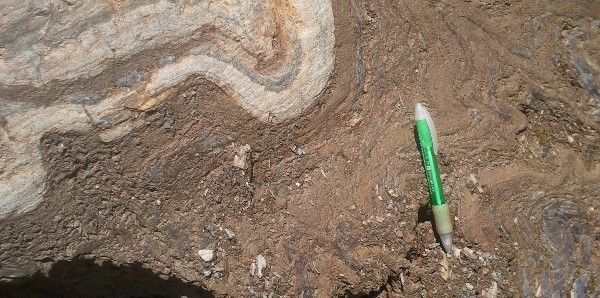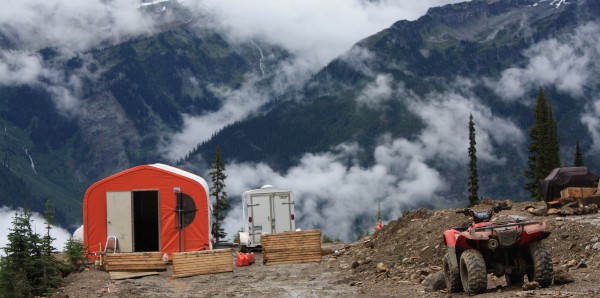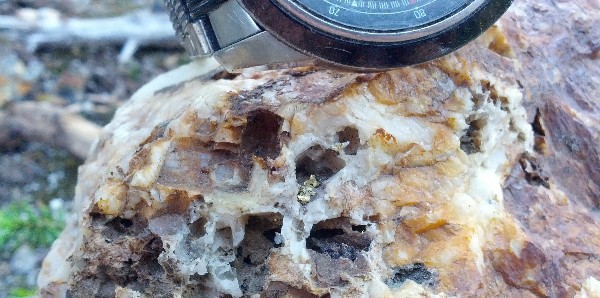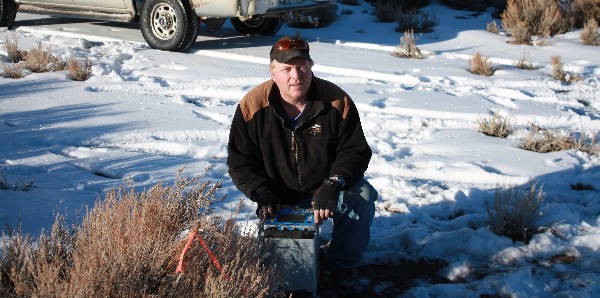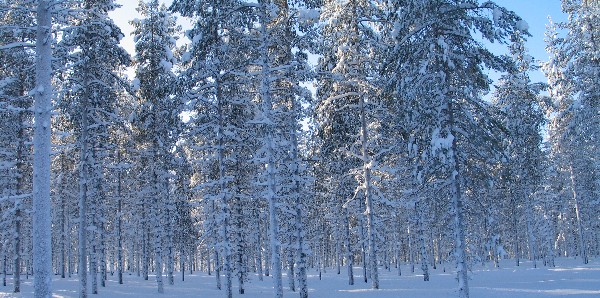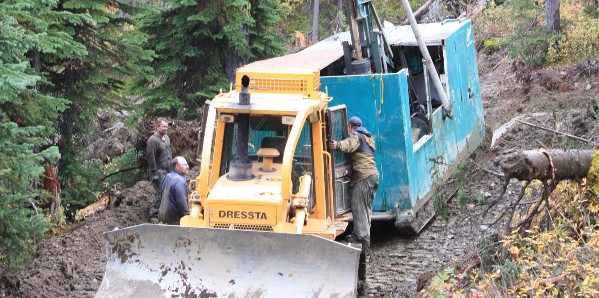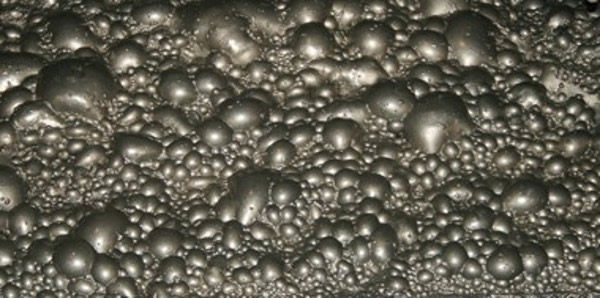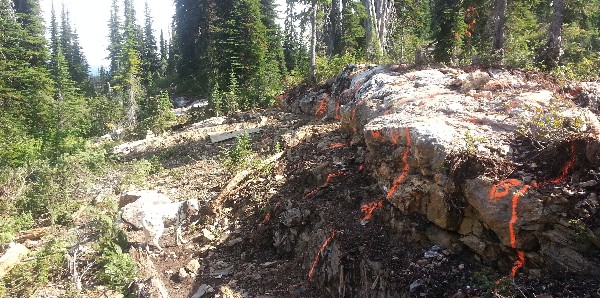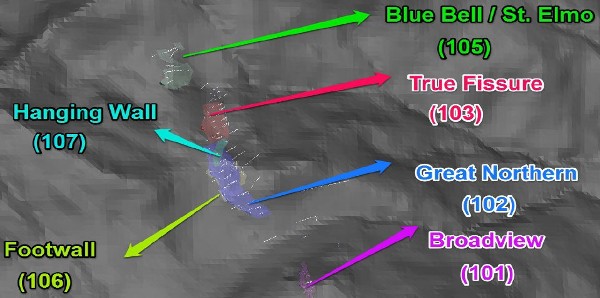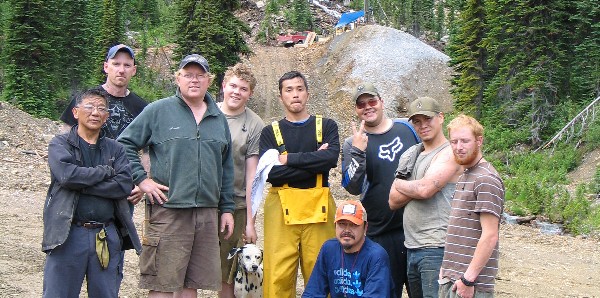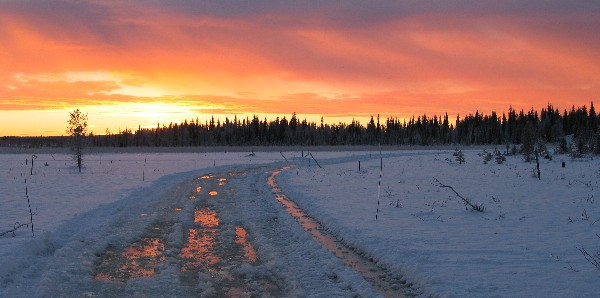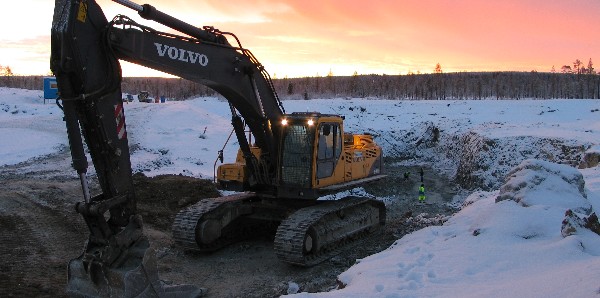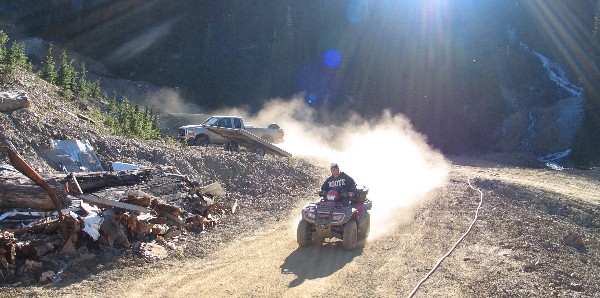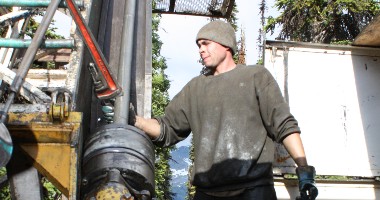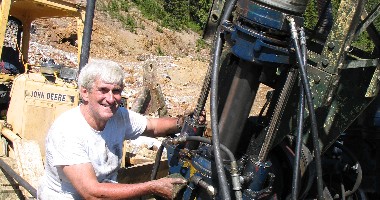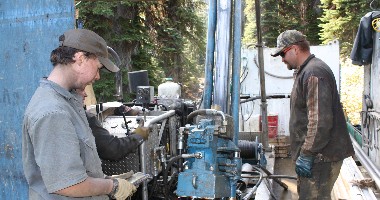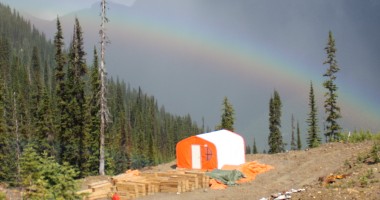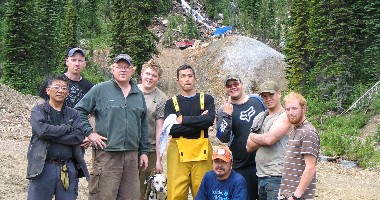NI 43-101 Resource on a Portion of Thor
NI 43-101 Resource Estimate
Mineral Resources are estimated at a net smelter return (NSR) cut-off value of US$50/t for potential open pit and US$100/t for potential underground. A preliminary Whittle pit was applied to constrain the potential open pit resource.
THOR MINERAL RESOURCE ESTIMATE SUMMARY*
|
|
|
|
|
|
||
Zone and Category |
NSR Cut-off |
tonnes |
Au (g/t) |
Ag (g/t) |
Cu (%) |
Pb (%) |
Zn (%) |
Potentially Open Pit |
$50 |
471,000 |
0.91 |
204 |
0.14 |
2.77 |
3.68 |
Inferred |
$50 |
189,000 |
1.28 |
218 |
0.16 |
2.70 |
3.83 |
Potentially Underground |
$100 |
168,000 |
0.81 |
141 |
0.13 |
1.78 |
3.03 |
Inferred |
$100 |
235,000 |
0.74 |
143 |
0.13 |
1.90 |
2.69 |
Total Indicated |
640,000 |
0.88 |
187 |
0.14 |
2.51 |
3.51 |
|
Total Inferred |
424,000 |
0.98 |
176 |
0.14 |
2.26 |
3.20 |
|
• CIM definitions were followed for the Mineral Resources classification, and Mineral Resources are estimated using an average long-term gold price of US$1,650 per Oz, a silver price of US$27/Oz, a copper price of US$3.50/lb, a lead price of US$1.15/lb and zinc price of US$1.25/lb. A 1.5 m minimum mining width was utilized. Numbers may not add due to rounding.
Here are some of the highlights of the NI 43-101 Resource estimate:
- The RPA NI 43-101 study broke down the deposit into Resources potentially mined by Open pit and underground methods using NSR values. Based on this method, 62% of the Resource is potentially open pittable and would improve the economics of a combined open pit – underground mining project.
- 60% of the deposit is classified as Inferred and 40% has been upgraded to Indicated – substantially improving the value and confidence level of the Resource.
- Mineralization included in the RPA study occurs on Crown Grants and Mineral Tenures owned 100% by Taranis. Crown Grants enable exploitation without being subject to lengthy Mining Lease Application process.
- The NI 43-101 study applied “zero-grade” to lost core intervals, and additionally some of the higher-grade intercepts were capped. Taranis expects to be able to increase the grade in future drilling by utilizing methods that will recover more of these softer mineralized zones.
- The RPA Resource estimate does not include high-grade surface mineral stockpiles with average grades ranging from 0.89 g/t Au to 1.12 g/t Au, 97.50 g/t Ag to 411.45 g/t Ag, 0.06% Cu to 2.79% Cu, 1.44 % Pb to 10.16% Pb, and 2.51% Zn to 9.72% Zn based on systematic grab sampling. However, Taranis plans to conduct measures to assess commercial processing of these samples while initiating Acid-Base Accounting and geochemical characterization this summer in order to facilitate processing of these stockpiles.
